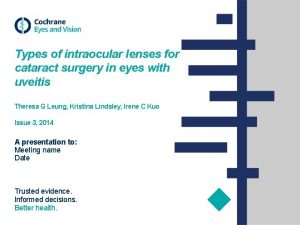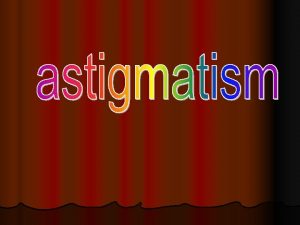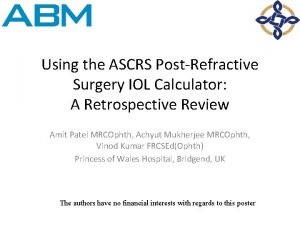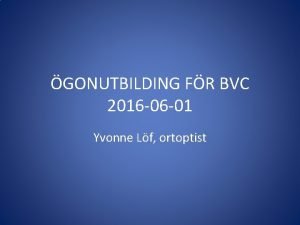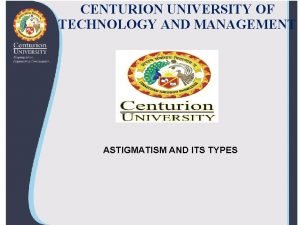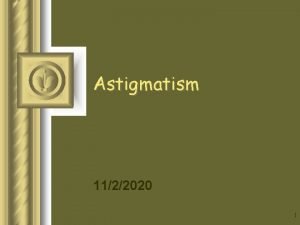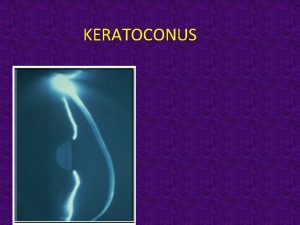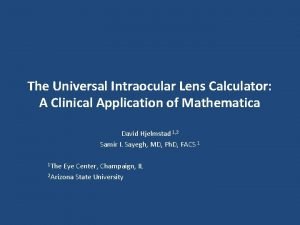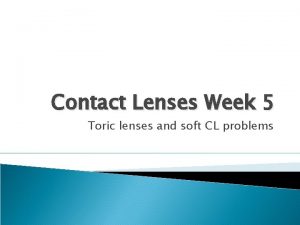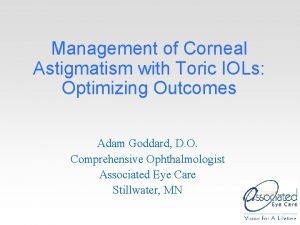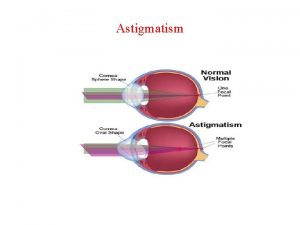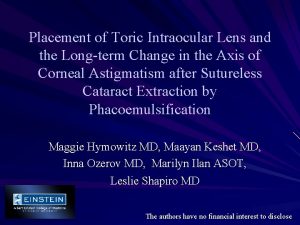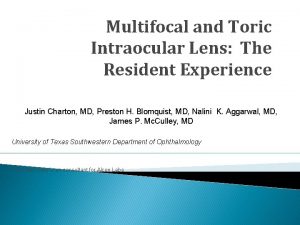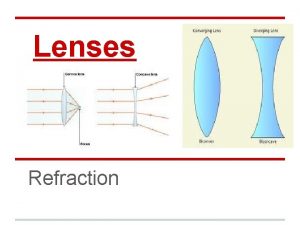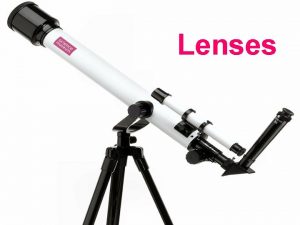Astigmatism management with toric intraocular lenses in cataract












- Slides: 12

Astigmatism management with toric intraocular lenses in cataract patients Adriano Guarnieri 1 -2, Luis W. Lu 3 -4, Alfonso Arias. Puente 1 -5 1 INCIVI, Madrid, Spain 2 University of Salamanca, Spain 3 Pennsylvania Eye Consultants, PA 4 University of Pittsburgh School of Medicine 5 Hospital Universitario Fundación Alcorcón, Madrid, Spain AUTHORS HAVE NO FINANCIAL INTEREST.

Purpose To evaluate the results obtained with toric intraocular lenses (IOLs) in the correction of preoperative corneal astigmatism in patients undergoing cataract surgery.

Methods A retrospective, noncomparative case series of 103 eyes of 89 patients who underwent phacoemulsification and posterior chamber IOL implantation. Acry. Sof® Toric IOL (models SN 60 T 3, SN 60 T 4, and SN 60 T 5; Alcon Laboratories, Inc. , Fort Worth, TX) were used in all cases. Pre-op corneal cylinder >1. 50 Diopters in all eyes.

Methods Routine coaxial phacoemulsification technique performed by the same surgeon (L. W. Lu). IOL inserted through 2. 8 mm incision. Acry. Sof® Toric IOL Web Based Calculator used in all cases with incision location at steep K axis.

Methods Uncorrected visual acuity (UCVA), best corrected visual acuity (BCVA) and manifest refraction were analyzed in all eyes prior to surgery and 3 and 12 weeks following cataract surgery.

Results At 3 months follow-up, 95% of eyes were within ± 1. 00 diopter (D) of emmetropia and 85% of eyes had an UCVA of 20/30 or better. Regarding the results achieved in the first eye, 87 of the 89 patients asked for a toric IOL implantation for the second eye.

20/25 20/30 20/40 20/80 20/100 20/200


Conclusion Our results indicate that posterior chamber toric IOL implantation is a predictable option to correct preexisting corneal astigmatism in cataract patients undergoing a routine phacoemulsification procedure.

Notes 103 eyes from 89 patients were included instead of 113 from 99 as originally noted in the abstract because corneal incisions (LRI or CCI) were also performed in 10 cases; these were excluded from the study. Surgeries performed between 2006 and 2007, not since 2004 as noted in the abstract (typing error).

Thanks to. . . Gil Rodríguez Caravaca, MD, Chief director of Medicina Preventiva at Hospital Universitario Fundación Alcorcón; for his statistical analysis and support.

Authors Adriano Guarnieri, MD Alfonso Arias-Puente, MD INCIVI, Madrid, Spain Luis W. Lu, MD, F. A. C. S. Elk County Eye Clinic, PA
 Types of intraocular lenses
Types of intraocular lenses Lastigmatism
Lastigmatism Lente tecnis symfony
Lente tecnis symfony Ascrs post lasik calculator
Ascrs post lasik calculator Hanita toric calculator
Hanita toric calculator Toric artiflex meaning
Toric artiflex meaning Postoperative nursing management of cataract
Postoperative nursing management of cataract Tvångshuvudhållning
Tvångshuvudhållning Horizontal line vertical line
Horizontal line vertical line Examples of astigmatism
Examples of astigmatism With the rule astigmatism axis
With the rule astigmatism axis Keratoconus red reflex
Keratoconus red reflex Biconvex lens calculator
Biconvex lens calculator
